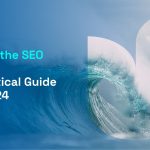The long-term value of blog posts

Blog content is an important component of many SEO efforts. Although strategic blog content development is demonstrably valuable for many SEO goals, savvy marketers understandably wonder what the typical lifetime value of a blog post is and how to maximize and extend that value.
Unfortunately, there is no definitive answer to these questions. There are many variables to consider, including individual SEO goals, the online sectors in which you operate, and ongoing changes to search engine algorithms.
It is often said that the value of a blog post diminishes dramatically after 30 days, but any attempt to give a specific, universal time frame for such a complex and situational matter is inherently flawed. While we cannot provide a satisfactory (but unreasonably simple) answer to this question, we can offer some general guidelines and best practices for evaluating and improving the lifetime value of a blog post.

What type of content offers the greatest long-term value?
Perhaps the most common mistake made when determining the lifetime value of a blog post is to evaluate a blog post in a vacuum, rather than realistically looking at how it fits into the framework of a site's broader blog content strategy. One factor that gives insight into the long-term value of a blog post is how much it supports your overall SEO strategy.
For example, a page about career opportunities for a civil engineer can be valuable content in its own right for a university's website. However, this content is far more valuable if it is part of a larger project to create a comprehensive catalog of professional content relevant to the degrees offered by that institution.
When we try to predict the long-term value of a piece of content based on its own merits, the following elements are typically consistent with long-term value:
- Content does not unnecessarily date itself by using wording that indicates when it was written.
- The content provides information that is unlikely to change in the near future.
- The content is not overly commercialized.
- The content does not only consist of company news.
- The content has depth and provides the reader with information that is truly relevant and helpful to them.
- The content reflects the intent of the searchers.
- The information contained in this post has not been meaningfully explored in previous posts on the site.
- The texts are professional, clean and easy to read.

The importance of regular publishing
By establishing a regular publishing schedule, you can greatly increase the long-term value of your blog content. This is not because you need to stay ahead of the rapidly declining value of your previous posts, but rather because you need to continually increase and refresh the value of your existing content.
A long-term content development strategy can greatly improve the return on your content by strengthening keyword signals and providing relevant content to your audience.
However, regularly publishing content on your blog brings other benefits to search engine algorithms. First and foremost, frequent publishing encourages search engines to crawl your content more frequently, which can lead to faster page indexing and user-facing updates related to your SEO efforts. Also, by creating more content for your blog, you increase your chances of attracting visitors or getting backlinks for your blog.

Considerations for linkable content
Also, when evaluating the long-term value of your content, it's important to understand the goals of that content in terms of your overall SEO strategy. Often marketers think of blog posts as keyword-driven content, but that's not the only type of content that's functional as part of a mid- or top-funnel blogging strategy. Linkable content is equally important to support various SEO goals, and is therefore necessarily different.
While some best practices for developing linkable content are the same as for keyword-driven content (e.g., avoiding purely promotional content, creating clean copy, using evergreen language), there are some best practices that apply only to linkable content.
Above all, linkable content should appeal to a larger audience than your target audience, especially those connected to external sites from which you hope to build backlinks. This can increase the chances of you getting those valuable backlinks, which in turn can strengthen the authority signals for your own domain.

Considerations for revising blog content
One important way to improve the long-term value of your blog content is to regularly strategize and make revisions. Some ways you can revise your content to increase its long-term value are:
- Correction of spelling and grammatical errors;
- Adjustment of titles based on an up-to-date keyword analysis;
- Ensure you don't cannibalize your content by publishing redundant information on multiple websites;
- Adjust time-related wording (e.g., dates) to better reflect the current day or to be more generally perpetual;
- Review links to ensure pages are still current and relevant;
- Looking for ways to include internal links to newer content.
However, it's important not to over-engineer your content, especially if it's already ranking highly or continues to strongly support its strategic purpose.

Algorithm update considerations
One factor that can affect the value of your blog posts is any algorithm updates for the search engine. This variable is not in the hands of the companies that produce content. However, that doesn't mean you can't take steps to protect the value of your content from algorithm updates.
First of all, you should track ongoing and expected algorithm updates. However, it is even more important to understand the underlying goals of the algorithm and its updates. In theory, the main goal of the algorithm is to give searchers the best possible answers to their questions.
The best way to protect the value of your blog content from algorithm changes is to ensure that your content thoroughly and honestly addresses the questions and concerns of your target audience.







